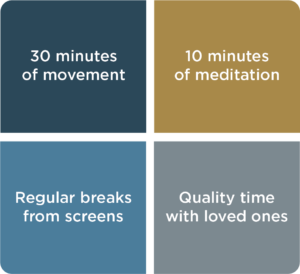Think successful entrepreneurs work 24/7? Think again. The most successful business owners aren’t chained to their desks – they’re masters at balancing growth with personal time.
The Myth of the Always-On Entrepreneur
Working longer hours doesn’t equal better results. In fact, research shows that entrepreneurs who maintain balance often make better decisions and grow their businesses more sustainably. A study of 500 successful business owners revealed that those who maintained structured work-life boundaries saw 27% higher revenue growth compared to their “always-on” counterparts.
The science behind this is clear: our brains need downtime to process information and generate insights. When we’re constantly “on,” we operate in a perpetual fight-or-flight mode, leading to decreased creativity, poorer decision-making, and eventually, burnout. The most successful entrepreneurs understand that strategic rest is as important as strategic work.
Consider this: Warren Buffett, arguably one of the most successful investors of all time, is known for his relatively relaxed schedule, prioritizing reading and thinking time over constant activity. Jeff Bezos insists on getting 8 hours of sleep and maintaining family routines. These aren’t coincidences – they’re strategic choices that enhance performance.
Creating Boundaries That Stick
Boundaries are like the foundation of a house – without them, everything else crumbles. The key is creating systems that support your boundaries, not just declaring them. Start by understanding your energy patterns. When are you most productive? When do you need breaks? Use these insights to design your ideal day.
Set clear work hours based on your peak performance times. If you’re a morning person, consider a 6am-3pm schedule. Night owl? Try 11am-7pm. The specific hours matter less than their consistency. Create transition rituals that signal the start and end of your workday – perhaps a morning walk to your home office or an evening review session.
Your workspace plays a crucial role in boundary maintenance. Even if you work from home, establish a dedicated area that’s solely for business. This physical boundary helps create mental separation between work and personal life. When you leave your workspace, let it signal a true end to your workday.
The distinction between “emergency” and “urgent” is vital for maintaining boundaries. True emergencies are rare – probably less than 1% of the “urgent” messages you receive. Develop clear criteria for what constitutes an emergency and communicate these to your team and clients. Everything else can wait until your next scheduled work period.
Building Boundaries

Your Wellness Toolkit
Success isn’t just about business metrics – it’s about maintaining the energy and clarity needed for sustained performance. Physical movement isn’t just about health; it’s about maintaining cognitive function. Studies show that regular exercise improves decision-making ability by up to 30% and enhances creative problem-solving.
Meditation and mindfulness practices aren’t luxury add-ons; they’re performance tools. Even 10 minutes of daily meditation can reduce stress hormones and improve focus. The key is consistency over duration. Start with just 5 minutes of guided meditation and build from there.
Screen breaks are essential for maintaining mental clarity and preventing decision fatigue. Implement the 20-20-20 rule: every 20 minutes, look at something 20 feet away for 20 seconds. Use apps like Stretchly or Stand Up! to remind you to take regular movement breaks.
Quality time with loved ones isn’t just about personal fulfillment – it provides perspective and emotional support crucial for entrepreneurial resilience. Schedule this time with the same priority as your most important business meetings.
Daily routine must haves

Making Balance Work for You
The secret to sustainable balance lies in proactive planning rather than reactive adjustments. Start by scheduling your personal time first – yes, before any business commitments. This isn’t selfish; it’s strategic. When you’re well-rested and fulfilled, you bring your best self to your business.
Your morning routine sets the tone for your entire day. Design a sequence that energizes and centers you. This might include exercise, meditation, journaling, or strategic planning. The specific activities matter less than their consistency and their alignment with your goals.
Evening routines are equally important for maintaining balance. Create a shutdown sequence that helps you transition from work mode to personal time. This might include reviewing tomorrow’s priorities, clearing your desk, and setting intentions for the next day.
Taking real weekends off isn’t just about rest – it’s about gaining perspective. Distance from your business often leads to breakthrough insights and creative solutions. Plan your weeks to front-load important tasks, allowing you to truly disconnect on weekends without anxiety.
Regular vacations are not indulgences – they’re strategic necessities. Studies show that entrepreneurs who take regular breaks (at least four weeks per year) show higher levels of innovation and better long-term business performance. Plan these breaks quarterly, even if they’re just long weekends, to maintain fresh perspective and energy.
Start with these simple steps

Remember, balance isn’t about perfect equality – it’s about sustainable rhythm. The goal isn’t to split your time exactly between work and personal life, but to create a sustainable pattern that allows both to thrive.
Download your free time-blocking guide here and start managing your time like a pro!
Just starting your productivity journey? Circle back to our first article: Time Management for Entrepreneurs: Strategies to Boost Productivity




